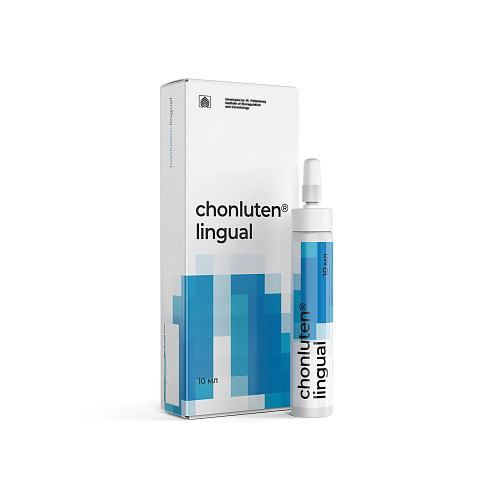
Chonluten® Sublingual Drops – Lung and Bronchial Mucosa Peptide Lingual Bioregulator (Cytogen)
Chonluten® sublingual drops normalizes the function of the bronchial mucosa
Chonluten® cytogen sublingual drops aid with the normalization of the bronchial mucosa. This relates to the formation of mucus in the main and lobar bronchi (airways) which is required as a first line of defence against irritants found in air such as dust, soot, gases and microbes. If bronchial mucosa is not formed correctly
Chonluten® drops are delivered sublingually below the tongue.
This product features in the
following categories
This product is associated with the following health conditions
Lung ProblemsProduct Description
Chonluten® sublingual drops contain a peptide complex plus 3 amino acids (glutamic acid, aspartic acid and glycine– complex AC-7). They have been developed based on research into the analysis of the amino acid sequence of polypeptides (short peptides with 3 amino acids).
Dosing with Chonluten® sublingual peptide bioregulator
Chonluten® drops are designed to be taken sublingually under the tongue.
- The recommended daily dose for an adult is 1ml, spread over 5-6 drops (25–0.35ml) 3-4 times per day. This contains 0.1mg of complex AC-7.
- It is recommended to take Chonluten® (or indeed, any sublingual bioregulator) 10-15 minutes before eating.
Chonluten® should be taken each day as directed for 1 month for optimal results. A repeated course is then advisable 3-6 months later.
Chonluten® is available in individual bottles measuring 10mL.
Ingredients: Water, complex AC-7 (glutamic acid, aspartic acid, glycine).
FAQWhat are Cytogens?
Cytogens are a new class of natural biologically active food additives known as parapharmaceuticals, which are known as Cytogens®. These are being heralded as superior to previous bioregulator preparations (Cytomax’) as they cause no side effects and act in minimal dosages. This class of bioregulators has no analogues in the world’s practice.
Difference between Cytogens and Cytomax’?
The primary difference between taking a synthetic Cytogen preparation and a natural Cytomax preparation is how fast they take to act. Cytogens are faster acting initially but the effects do not last as long as those of a Cytomax preparation. However, it takes longer for a Cytomax preparation to work at the start.
What is the bronchial mucosa?
The bronchial mucosa is the mucous membrane lining the bronchial tubes in the respiratory system. The mucus produced by the specialized epithelial cells helps to trap foreign particles that may otherwise enter the airway, such as toxins, pathogens and dust. Cilated cells (cilia) are also included in this mucus; these cells have hair like structures that move the trapped foreign particles towards the throat where they are then either expelled by coughing or swallowed, instead of entering the lungs.
Why is it essential to normalize this system?
If the bronchial mucosa is not normalized, this can lead to either a shortage or an excess of this mucus.
- If there is not enough mucus being produced, then foreign particles may enter the lungs and cause problems with breathing and respiratory function.
- If there is an excess of this mucus, this will build up and can obstruct the airways.
If the mucus being produced is not healthy or becomes inflamed, this can lead to problems such as asthma, bronchitis, wheezing, coughing and shortness of breath.


